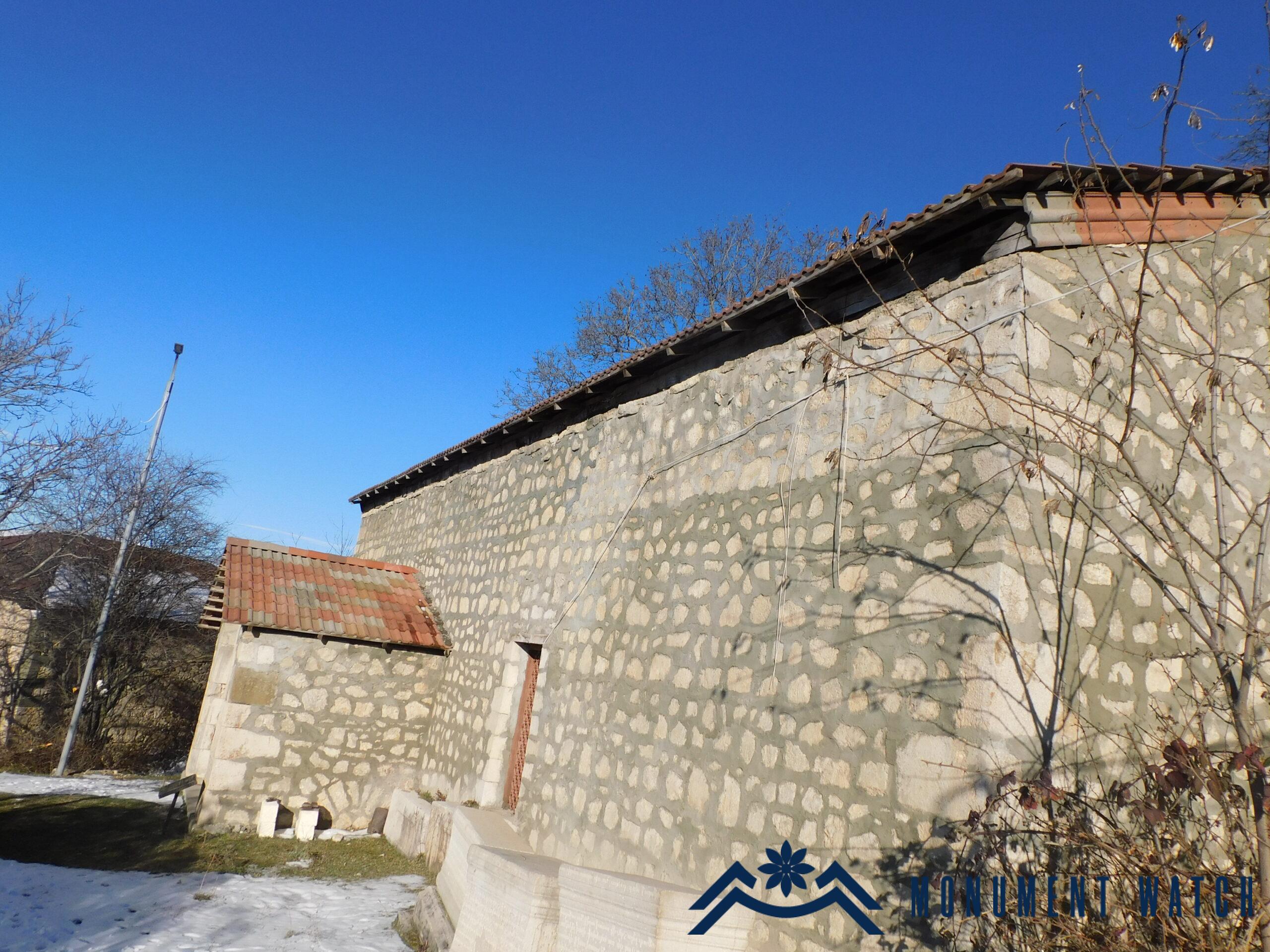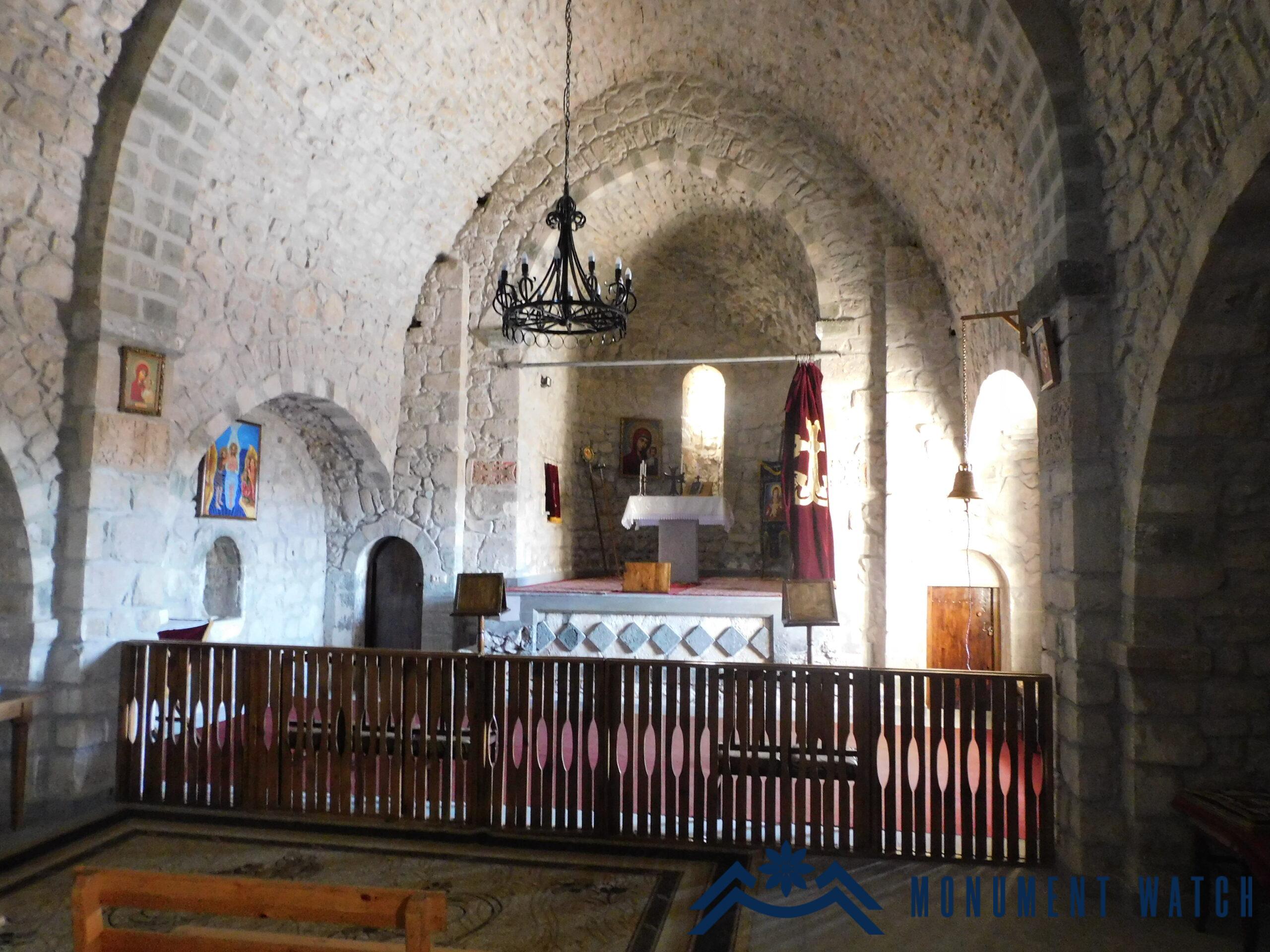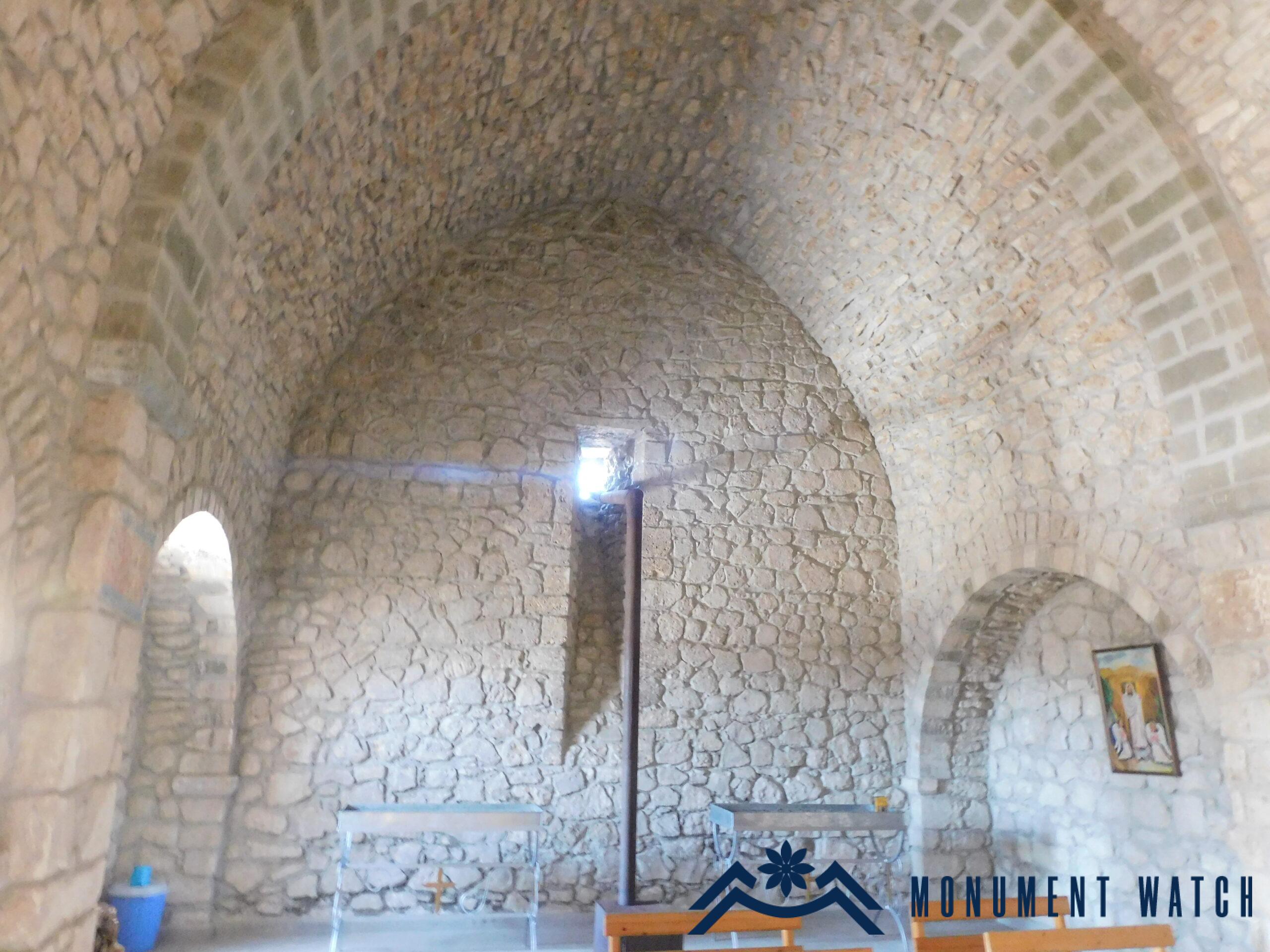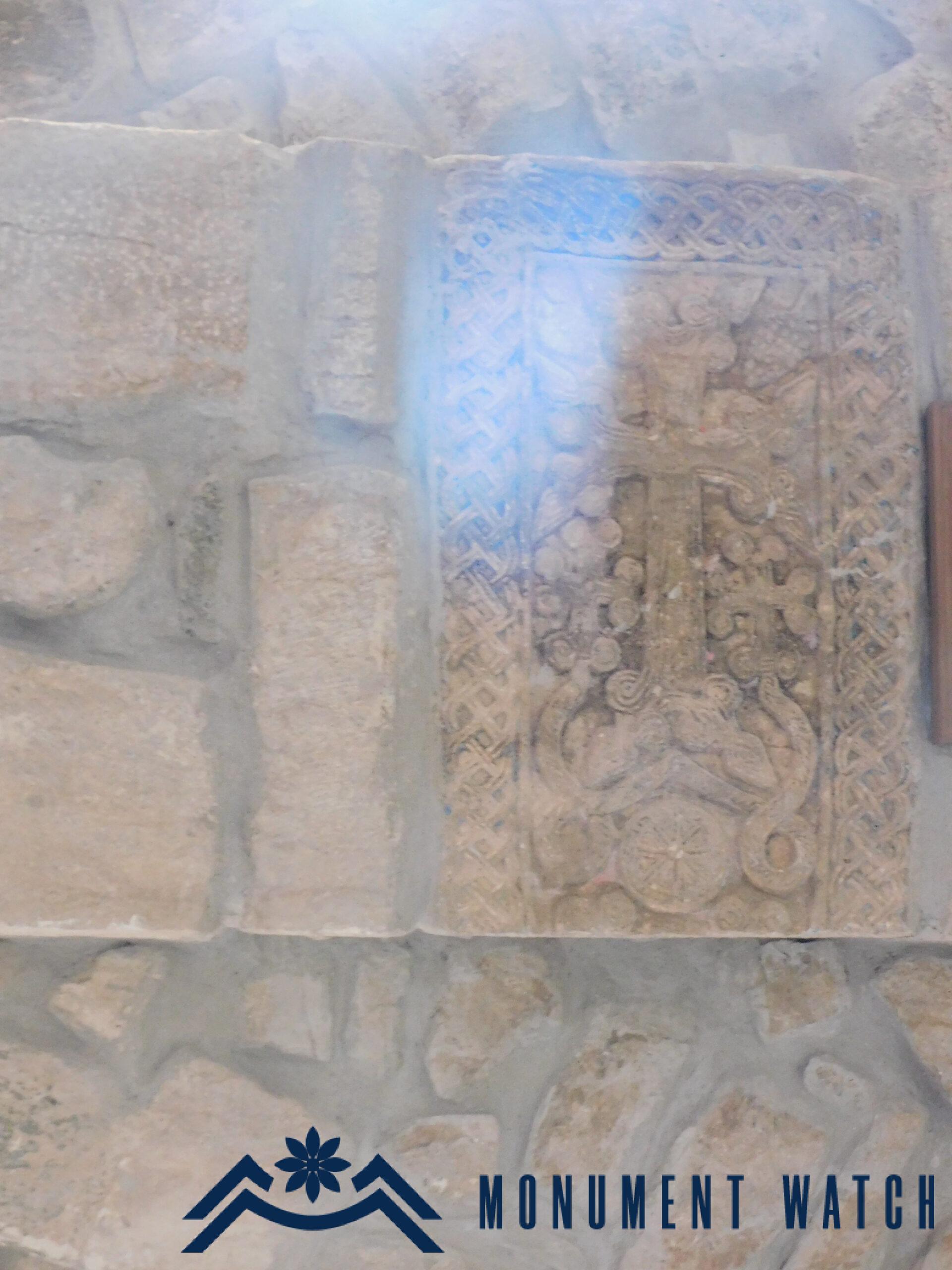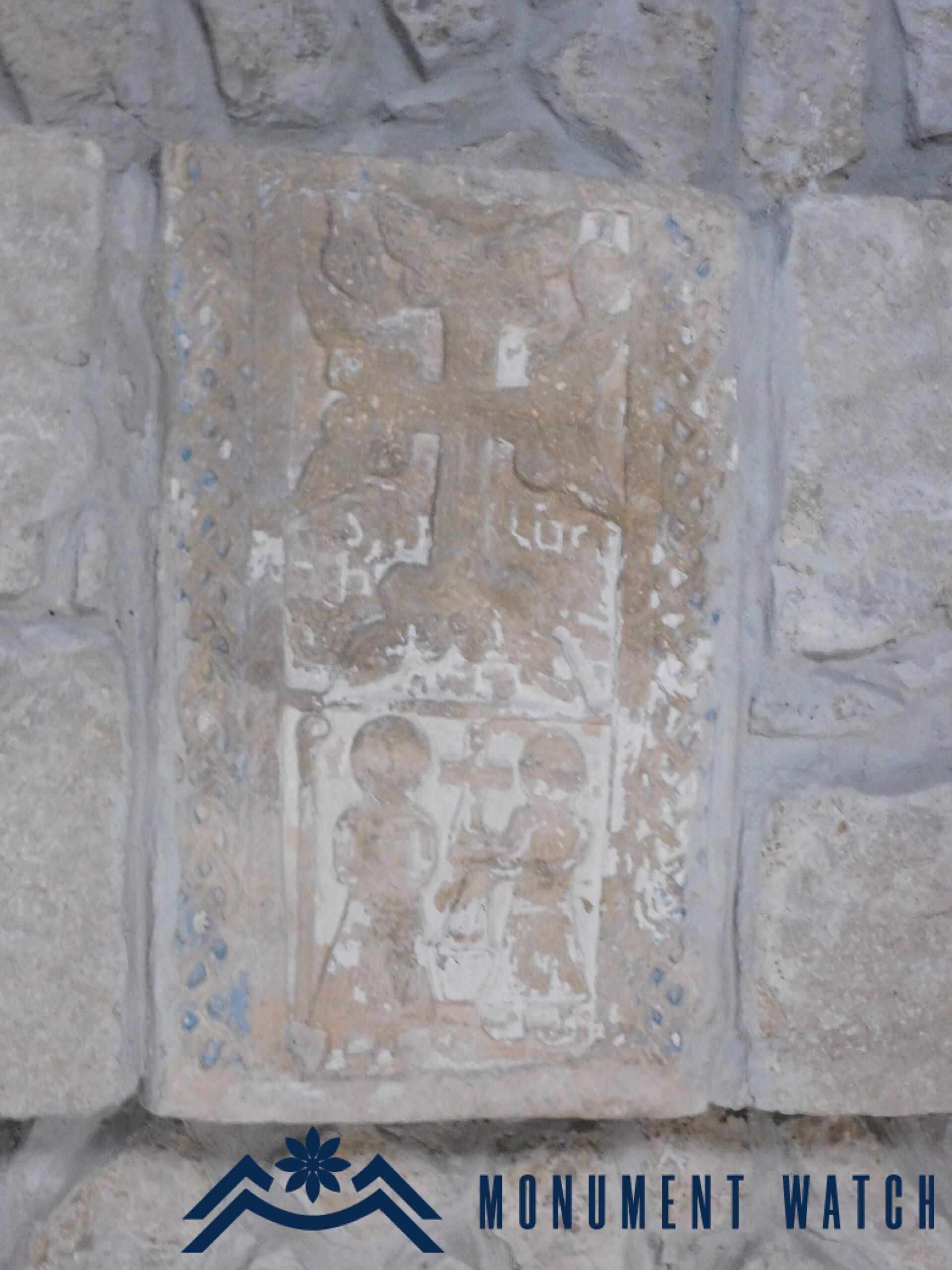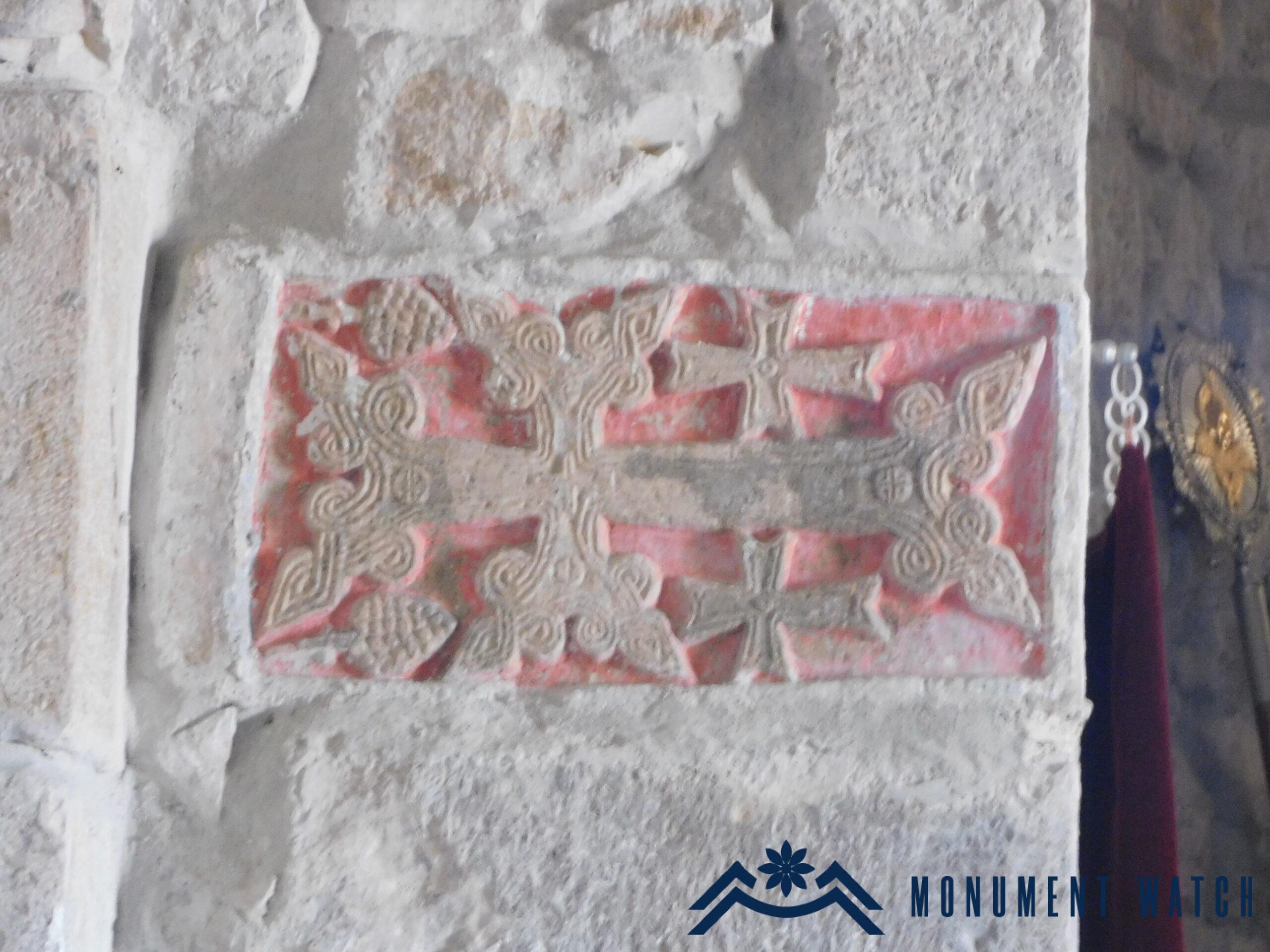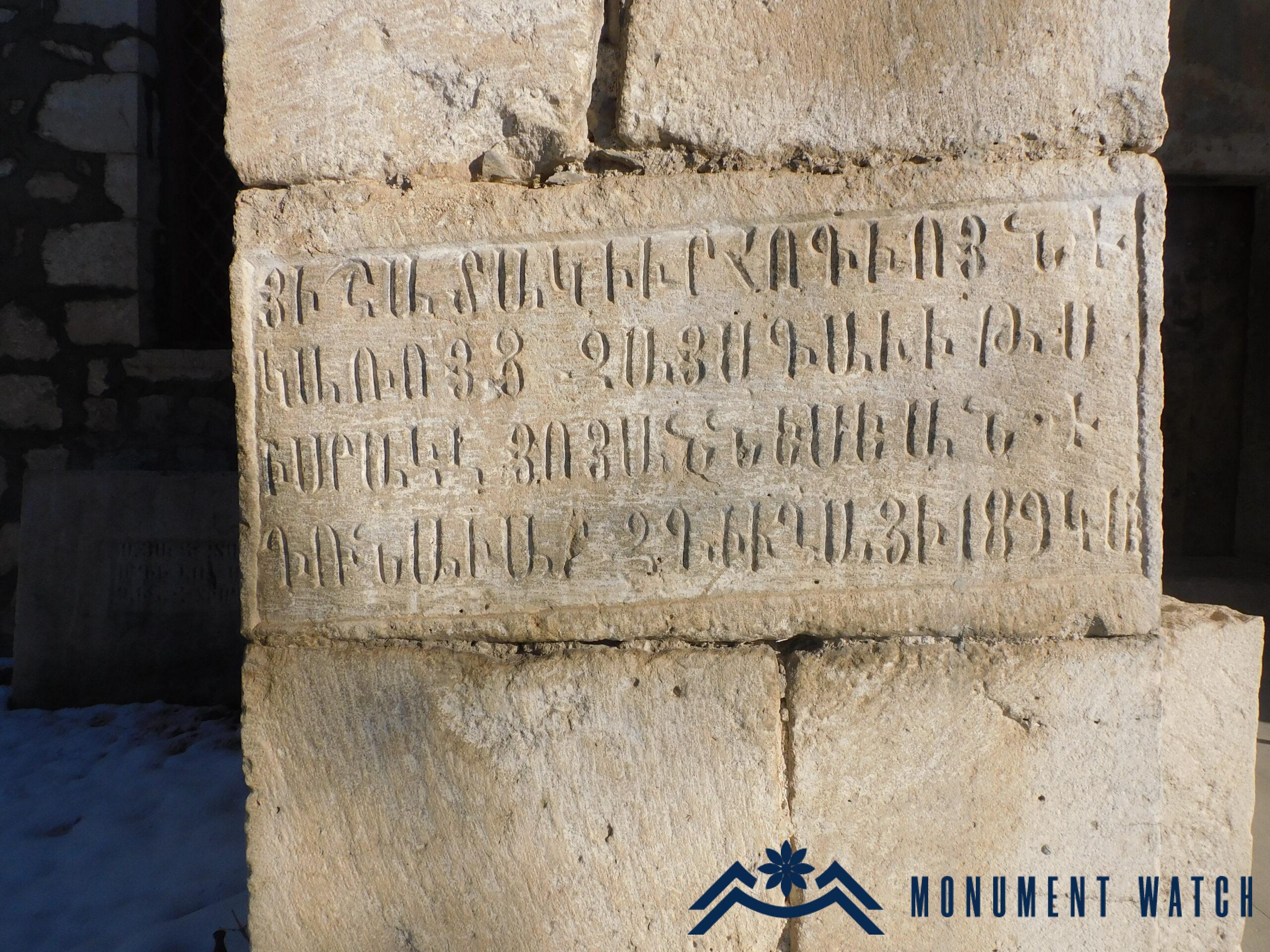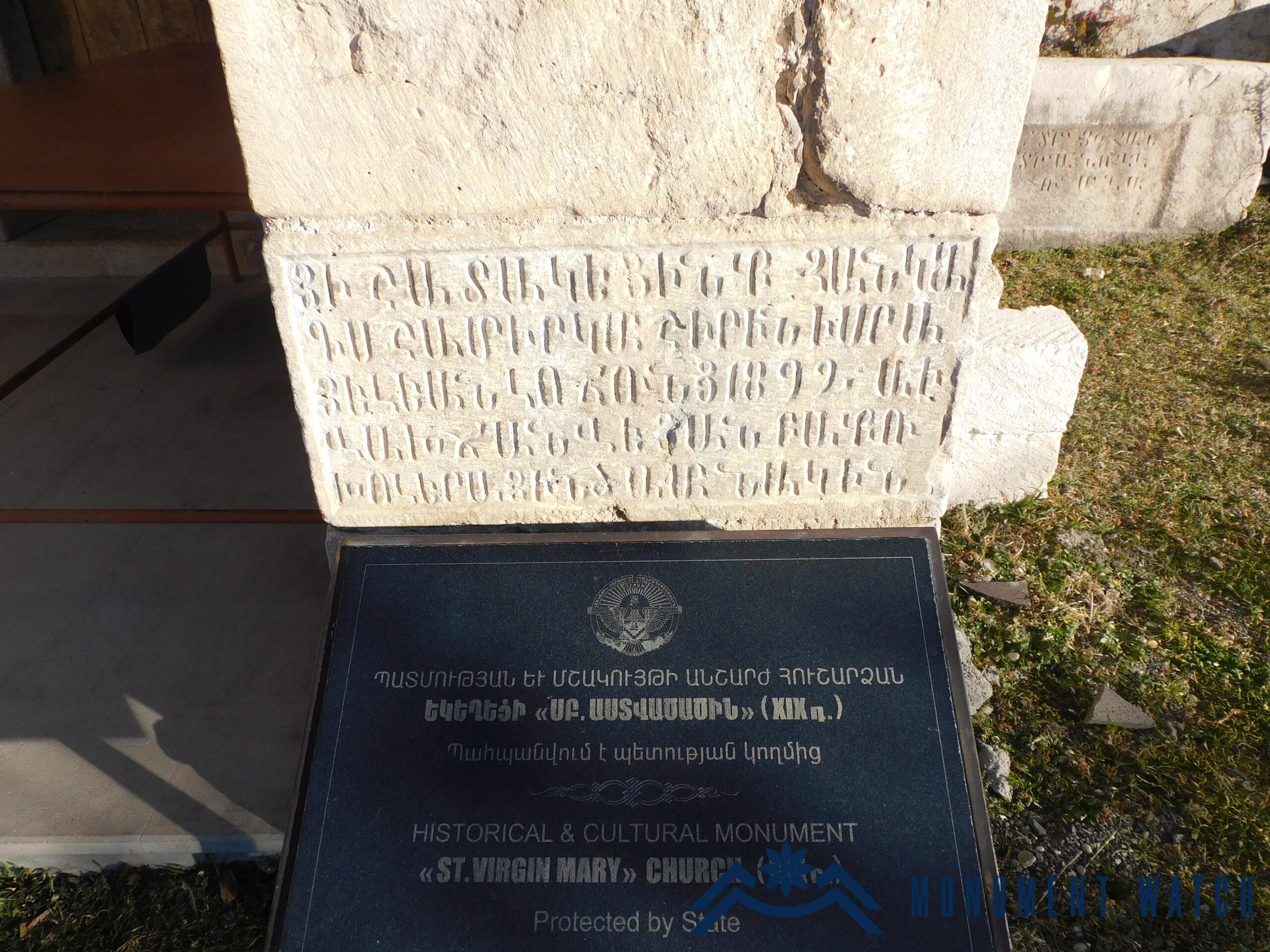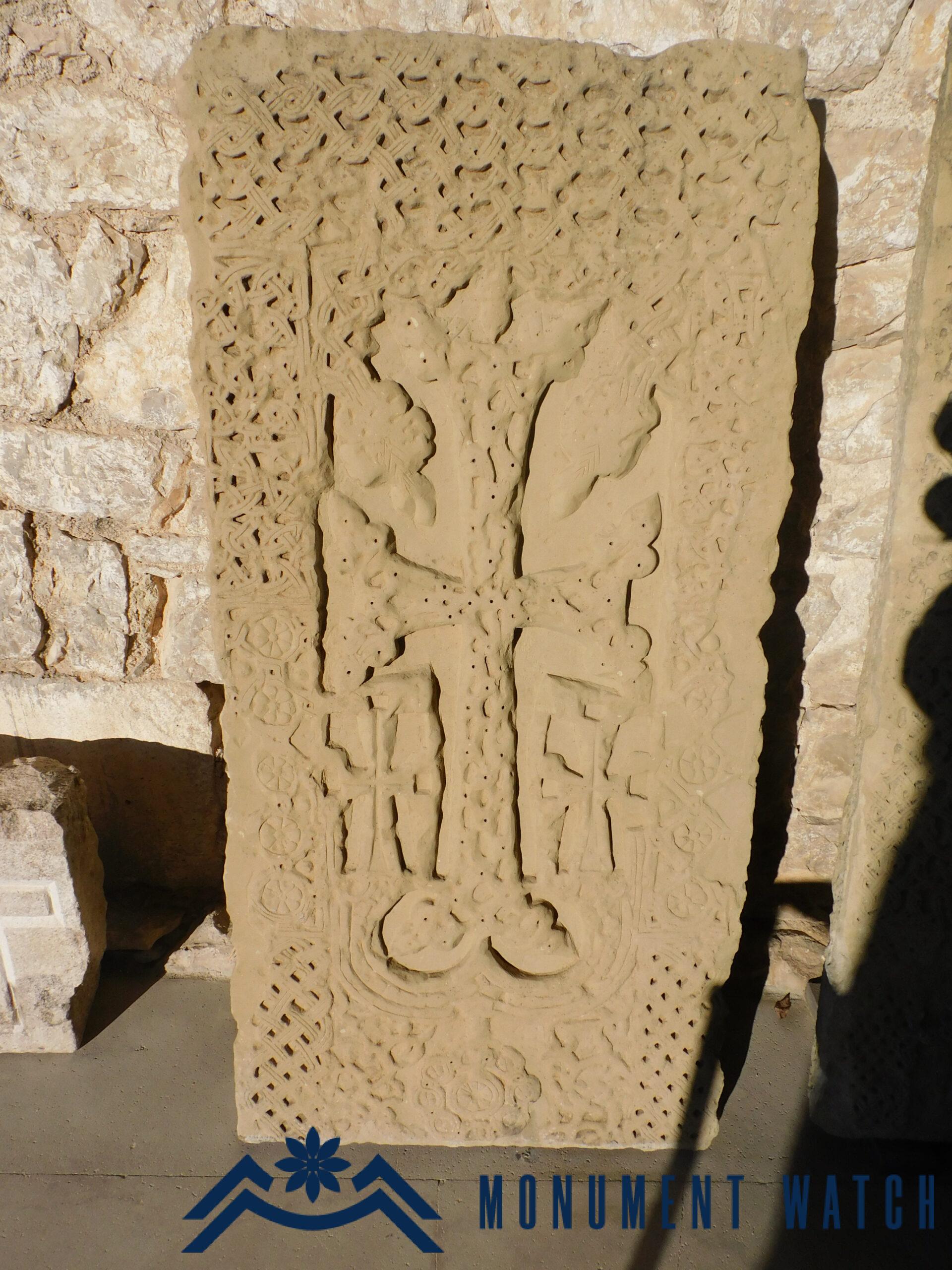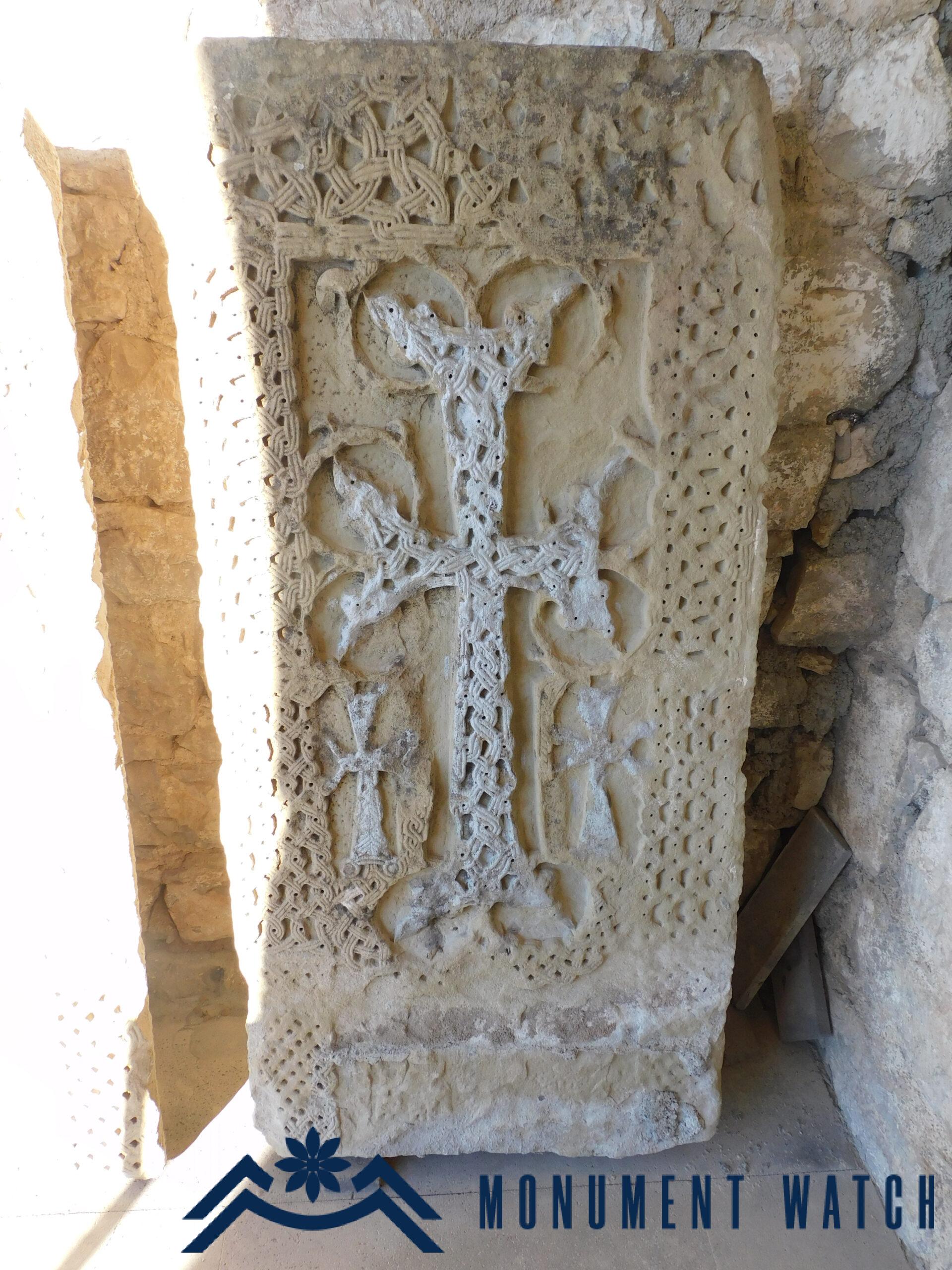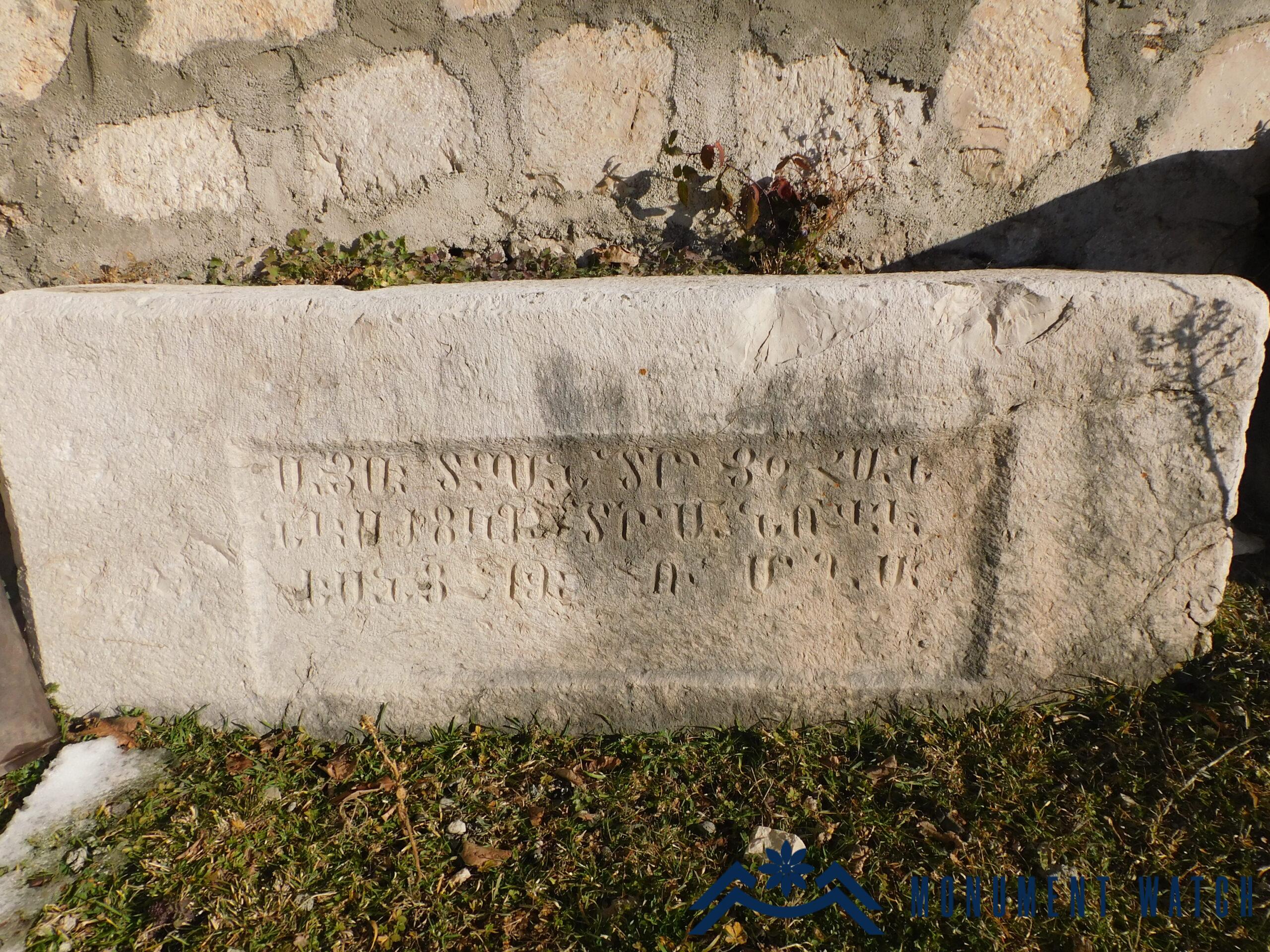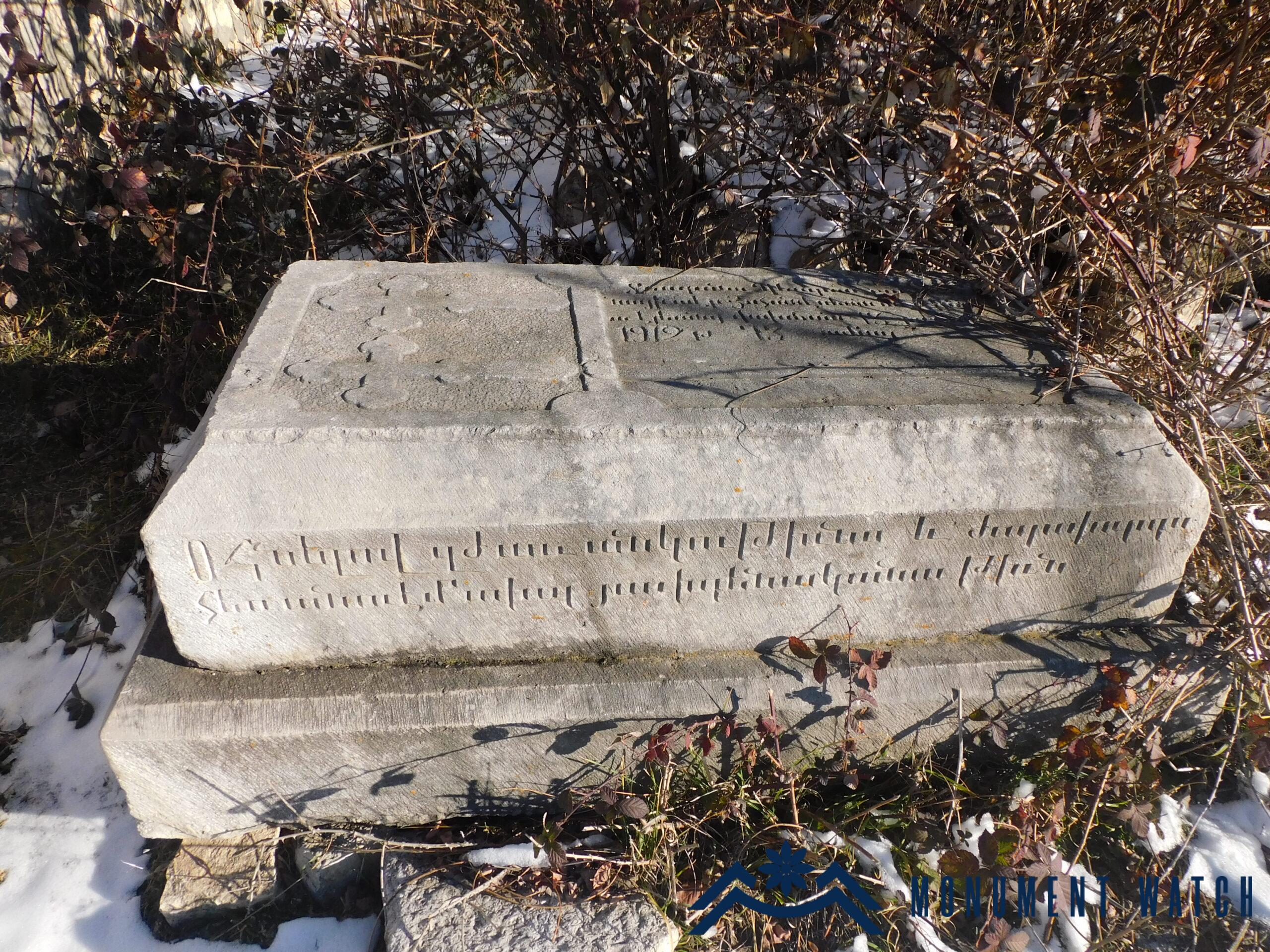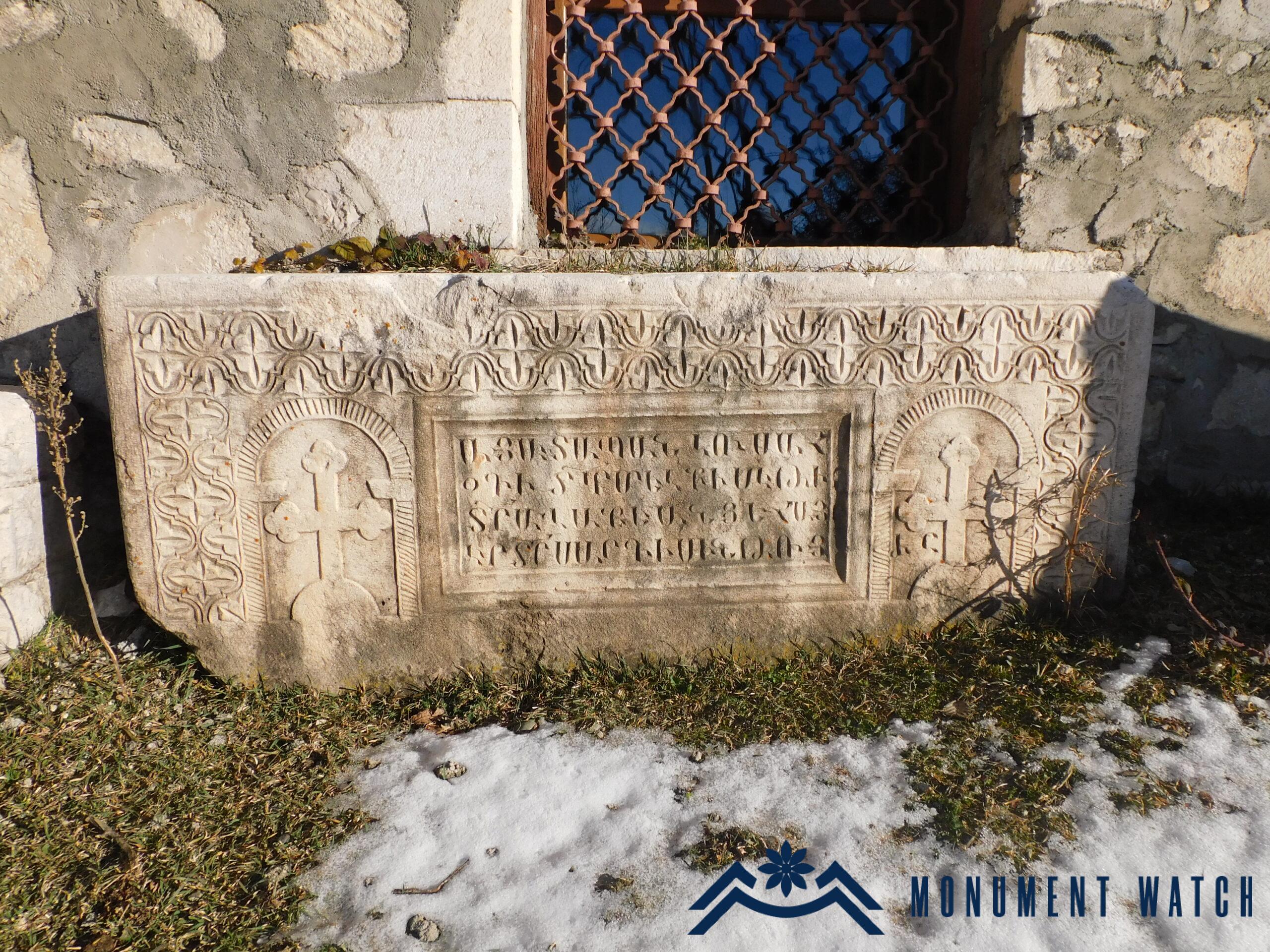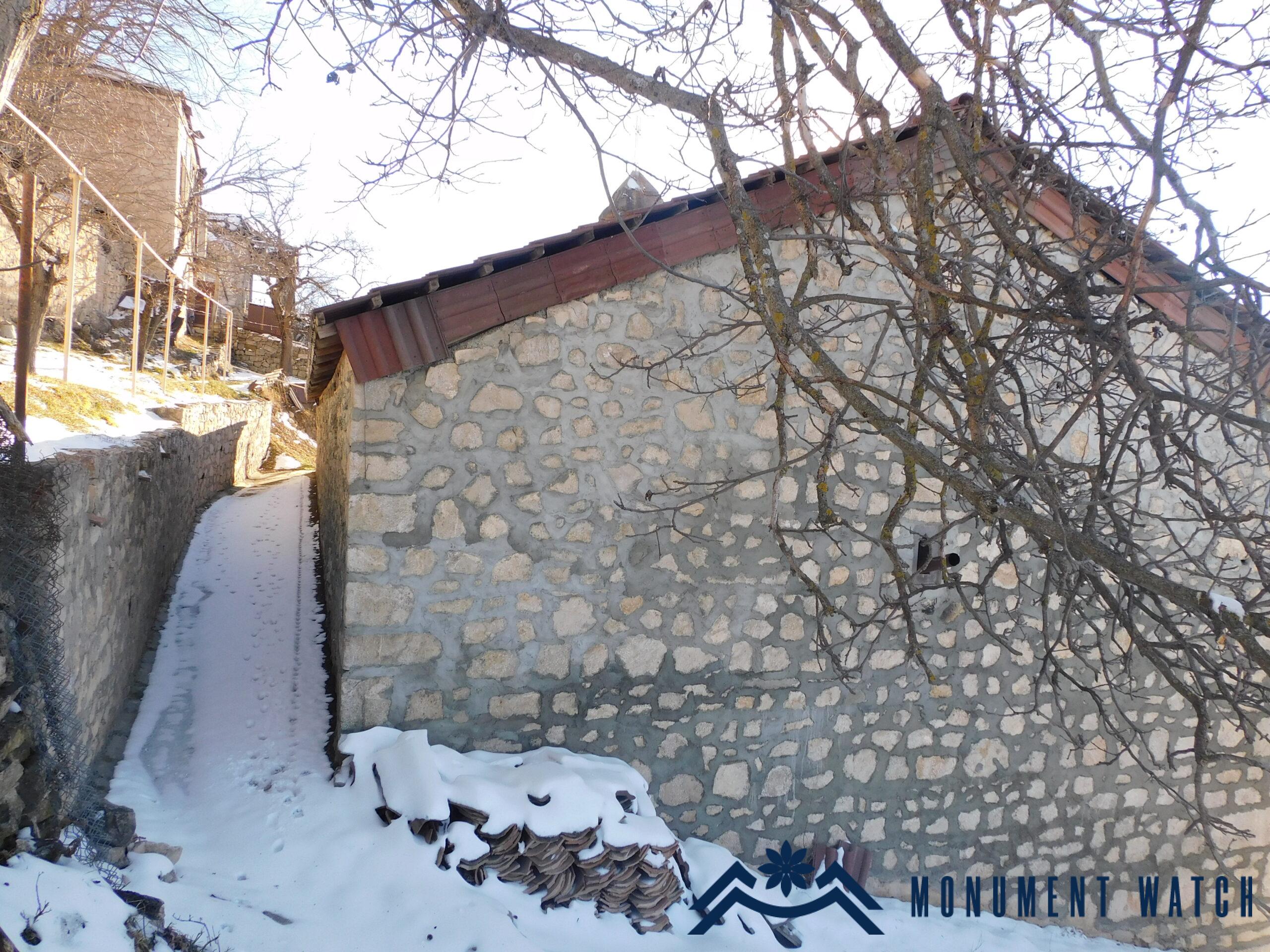Surb Astvatsatsin church of Karmir village
Location
Surb Astvatsatsin Church is located in the Askeran region's Karmir village (Fig. 1).

Historical overview
Karmir village, also known as Trnavarz-Drnavarz, is located in the Askeran region. According to Makar Barkhudaryan, "Drnavarz was established on the Poghrkhana Mountain’s south-eastern slope. The villagers are indigenous to the land" (Barkhutareants 1895, 85). Drnavarz was renamed Karmir Village in 1921.
Architectural-compositional examination
The church was built in 1841, according to an inscription on the entrance facade stone. It is a single-nave rectangular hall made of rough limestone and lime mortar. The structure's cornerstones, the tabernacle, the entrance curbstones, arches, vaults, windows, and other openings are polished. The semicircular tabernacle on the eastern side has sacristies on both sides (Fig. 2). It is internally vaulted (Fig. 3), and it has a new double-tiled roof on the outside. The nave is supported by arrow-shaped arches that rise from two pairs of pilasters.
The belfry, built of polished stone with four columns and a pyramidal gable, rises in the middle of the roof.
On the northern wall, the baptismal font has been preserved. Inside the church, there are 12th-13th century khachkars with various decorations and sculptures on the walls (Figs. 4, 5, 6, 7).
It is illuminated by two large windows on the south side and one small window on the west and east sides. The entrance is on the south side. A vaulted vestibule was built adjacent to it (Fig. 8), with the following inscription on the southern part of the vestibule's western wall: "This gavit was built in 1894 by Israel Hovhannisyan, a Drnavarz villager, in remembrance of his soul” (Fig. 9).
Another inscription has been preserved in the southern section of the hall's eastern wall, which refers to the earlier belfry or the bell, which was a gift to the church. "This bell is a memorial to Shamir or Shirin Israelian Lochunts, who passed away in Baku in 1892 from cholera” (Fig. 10).
A pair of beautifully sculpted khachkars from the 12th and 13th centuries are placed in the hall (Figs. 11 and 12), which were moved here from the sanctuary of Khachin Tak, according to villagers' testimony. The sanctuary is situated in the village area.
Several tombstones have been preserved on the church grounds (Fig. 13), some of which are the tombstones of the village's priests from various eras. "This is the gravestone of the priest ter Petros Yohanesian ter Manueleants, who passed away in 1912 at the age of 73. I leave, alas, to eternity, blessing my descendants and nation"(Fig. 14), "This is the gravestone of Lord Melkiset Ter-Avakeants and father of ter Sargis, 1869" (Fig. 15).
The condition before, during, and after the war
The church was renovated between 2016 and 2018. (Fig. 16).
The church was targeted during military operations in 2020, and the Azerbaijani armed forces fired a projectile at it, which fell nearby. It was discovered and neutralized in February 2022 (view details on Azerbaijan's targeting of the Surb Astvatsatsin Church in Artsakh's Karmir Village during the 44-day war here).
Bibliography
- Barkhutarean 1895 - Barkhutarean M., Artsakh, Baku.
Surb Astvatsatsin church of Karmir village
Artsakh
